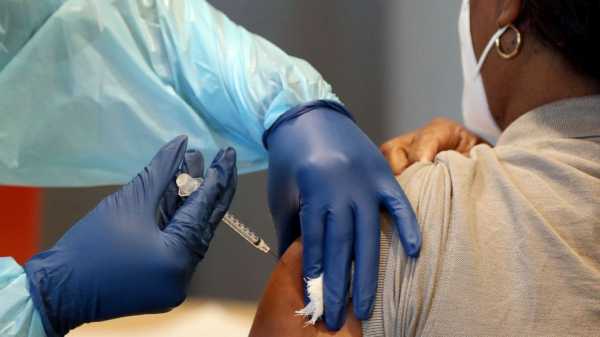Most people suffering from long COVID are experiencing some trouble performing day-to-day activities, new federal data shows.
As of Sept. 26, 81% of adults with ongoing symptoms of COVID lasting three months or longer — or four out of five adults — are experiencing limitations in their daily activities compared to before they had the virus.
MORE: 'No man's land': Long COVID knocks young workers out of the job market
Additionally, 25% said they were experiencing significant limitations.
The data was published Wednesday by the Centers for Disease Control and Prevention's National Center for Health Statistics.

A woman receives the COVID-19 vaccine, April 19, 2022, in Florida.Amy Beth Bennett/Sun Sentinel/TNS via Getty Images, FILE
The NCHS has been issuing the experimental Household Pulse Survey to ask about the impact of the COVID-19 pandemic since April 2020 but included a question last month, in the survey sent to more than 50,000 people, on how long COVID has reduced people's ability to carry out day-to-day activities.
Young adults between ages 18 and 29 had the highest share of people currently with long COVID who have trouble performing daily tasks, at 86.3%. Meanwhile, those between ages 40 and 49 had the lowest share, at 76.1%.
When current long COVID patients were broken down by race/ethnicity, Black Americans were the most likely to report problems performing day-to-day activities, at 84.1%. This was also the racial group most likely to report significant limitations, along with white Americans.
The data showed that Asian Americans have the smallest share of long COVID patients with trouble performing daily tasks, at 76.7%.
The survey did not report data for most states. However, of the 14 states with data, Texas had the highest percentage of long COVID patients with activity limitations at 87.6% and Kentucky had the lowest percentage at 69%.
Long COVID occurs when patients who have cleared the infection still have symptoms lasting more than four weeks after recovering. In some cases, these symptoms can persist for months or even years.
Patients can experience a variety of lingering symptoms including fatigue, difficulty breathing, headaches, brain fog, joint and muscle pain, and continued loss of taste and smell, according to the CDC.
It's unclear what causes people to develop long COVID but research is ongoing.
MORE: New guidance released on diagnosing, treating long COVID symptoms
The data showed that 14.2% of survey participants said they had experienced long COVID at some point during the pandemic.
Adults under age 60 were more likely to say they had the condition than older adults, and females were more likely to report long COVID than males.
A review from Johnson & Johnson's Office of the Chief Medical Officer for Women's Health published in June 2022 analyzed data from studies involving 1.3 million patients and found women are 22% more likely to develop long COVID than men.
Sourse: abcnews.go.com






